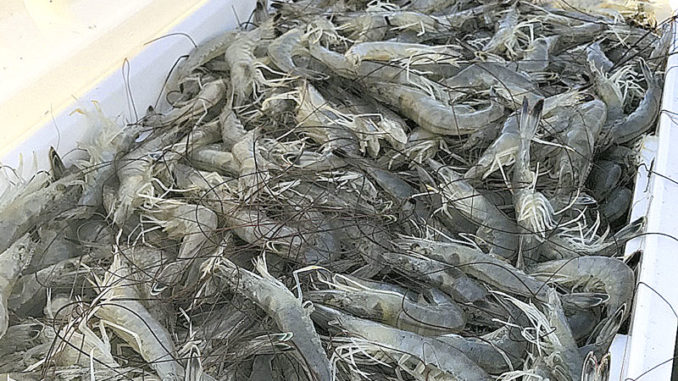
Shrimp-baiting season opens this month
Shrimp are the most-popular seafood item across the planet, exceeding fish, crabs and all other shellfish species. Most consumers buy shrimp at seafood markets or their favorite seafood restaurants. But South Carolinians can participate in the recreational shrimp-baiting season that starts the Friday after Labor Day.
With a recreational shrimp-baiting license, a bucket of bait balls and a cast net, sportsmen can catch their 48-quart cooler limit in quick fashion.
Recreational shrimpers deploy poles and bait balls in any of the many estuaries up and down the Palmetto State’s salty shores. The Cape Romain and Bulls Bay areas south of Georgetown are the favorite estuaries for Stacy Atkinson of Low Country Wildlife TV to collect a limit of the finest decapod crustaceans.
McClellanville is the entry point for Atkinson, one of the best native South Carolinians at filling up a cooler with shrimp.
“Cape Romain and Bulls Bay are shallow overall but are always full of shrimp in the fall,” said Atkinson. “I usually start near the ocean on high tide in places with shallow water and an available small channel.”
Don’t be afraid to adjust if you’re not netting plenty of shrimp
He prefers the falling tide because the retreating water naturally corrals everything into the deeper sections. Atkinson arranges his poles across the small channels. But he will re-arrange them if the best action is on one end or the other.
Plenty of different areas in the big bays will support healthy shrimp populations. But places where they held last fall might not be where they’ll stay this fall. These waters are very dynamic. The water depths and bottom contours will change frequently throughout the year. That’s especially true after tropical storms.
“It can be a lot of work setting up poles and making bait patties to set up to shrimp,” he said. “I like to idle through an area first before I make my set. If any shrimp are there, the boat’s turbulence will cause them to jump out of the water in the wake.”
If Atkinson makes a set and the poles aren’t producing, he will pull them and move.
“The key to being successful at shrimping is to be adaptable. If you aren’t getting many shrimp on each cast, pull the poles and move somewhere else,” he said.
The 2023 shrimp-baiting season runs Sept. 8 through Nov. 12 at noon. Cast nets used for taking shrimp over bait must have a minimum mesh size of 1/2-inch square. The daily limit is 48 quarts heads-on or 29 quarts headed per day.

